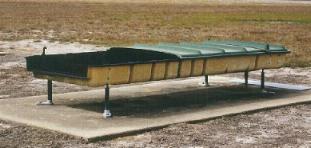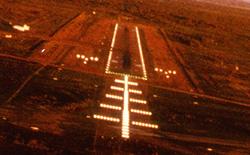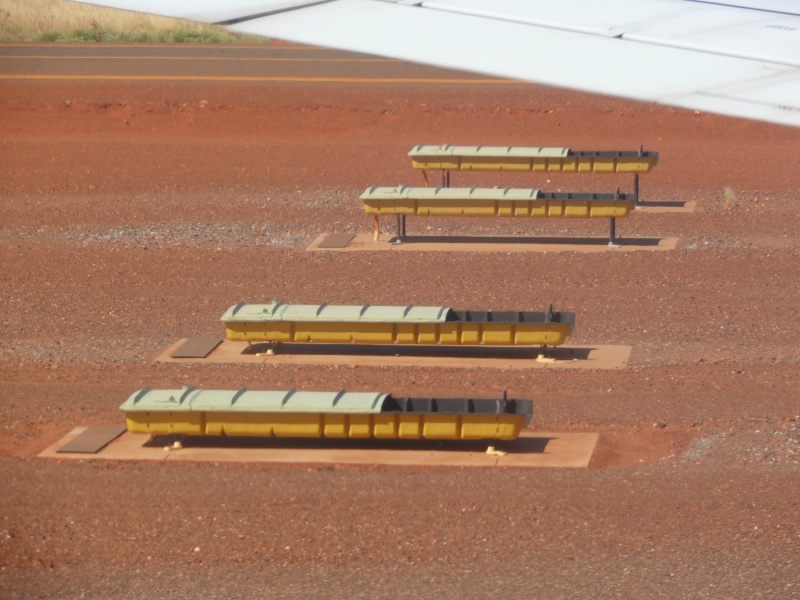Bienvenue !
Nous sommes ravis de vous accueillir sur le forum des pilotes privés.
Vous êtes sur un forum de discussions public, permettant aux pilotes privés, mais aussi à tous les passionnés des choses de l'air, d"échanger leurs idées, leurs expériences, leurs questions.
S'il s'agit de votre premier accès à ce site et que vous n'avez pas créé de pseudonyme, votre accès est restreint. Vous devez obligatoirement vous enregistrer avant de pouvoir accéder à la totalité des rubriques, et apporter vos contributions. L'enregistrement ne prend que quelques secondes.
Pour cela, cliquez sur l'option "M'enregistrer " dans le menu à droite ci-dessus.
Si vous possédez déjà un identifiant, indiquez-le dans la zone de saisie ci-dessous.
Nous vous remercions pour votre compréhension, et vous souhaitons de passer de bons moments sur le Forum des Pilotes Privés.
Les Administrateurs
Quizz des antipodes: encore un!!!
Re: Quizz des antipodes: encore un!!!
c'est un T-VASIS
Le seul cas ou il y a trop d'essence c'est quand il y a le feu
-

mikelima - Messages: 847
- Inscription: Mardi 18 Septembre 2007 19:33
- Aérodrome: ACDCV Carpentras (LFNH) & Peyrelevade
- Activité/licences: PPL VFR/NVFR/exIFR/Voltige SEP/MEP/ULM
Re: Quizz des antipodes: encore un!!!
 | A typical T-VASIS lightbox. Click here for an enlarged view. |
With the approaching introduction into service of long-bodied jets such as the Boeing 747, it was necessary to find a suitable visual landing aid. T-VASIS was acceptable as it provided, without modification, an indication of a higher, parallel approach slope but the red-white VASIS required an extra bar of lights to be installed. The enthusiasm of Australian and New Zealand airline pilots for T-VASIS obtained the support of the International Federation of Airline Pilots, and this body did much to encourage international acceptance of the system. Subsequently, the Visual Aids Panel of ICAO at its meeting in February 1970 recommended the adoption of T-VASIS as an alternative standard. This recommendation was adopted by the Council of ICAO in March 1971 and became effective in January 1972. Thus ended a ten-year struggle to have T-VASIS accepted internationally. About 100 systems were finally installed in Australia, New Zealand, New Guinea and other countries. In 1971 the T-VASIS was recognised as a significant contribution to aviation safety and was awarded the Prince Phillip Prize for Australian Design. The joint developers – DCA, and the system’s manufacturer, Reinforced Plastics - shared the prestigious award. Competition judges commented "The judges feel that this system will enhance the safety of jet flying and is a very real contribution to world aviation advancement". In 1973, the Department of Transport (incorporating the former DCA) and ARL shared receipt of the Diplome d’Honneur of the Federation Aeronautique Internationale (FAI) for the invention and development of T-VASIS. The Letters Patent for an "Improved glide path guidance means for aircraft" named the inventors as John Baxter and Ronald Cumming (from ARL), and Bruce Fraser and Dr John Lane (DCA). | |
 | |
[SIZE=130]Pilots' Notes on the "T"-Visual Approach Slope Indicator System[/SIZE] | |
These notes are reproduced from the 1st edition of DCA Publication No. 44 Pilots' Notes on the Visual Approach Slope Indicator System ("T"-System), October 1963. Note that this is not the current issue of this publication. | |
GENERAL In D.C.A. Publication No. 43, the "Red-White" Visual Approach Slope Indicator System and its use were described. This system, being an I.C.A.O. standard, is being installed at certain Australian international airports. However, another Visual Approach Slope Indicator System, known as the "T"—VASIS, has been developed in Australia and will also be installed at several airports. The specific type and location of VASIS will be published in A.I.P./RAC-2 landing charts. The "T"—VASIS system provides approach slope guidance by symbolic means as distinct from colour differentiations, colour being used only to provide a conspicuous warning signal when an approach is made which grossly undershoots the correct approach slope. The system is of variable intensity and will be displayed for use by both day and night. It is designed for use over ranges of at least four miles. The symbolic nature of the system is such that it may be likened to an I.L.S. glide path indicator—the cross bar representing "on slope", and deviations from "on slope" appearing as one, two or three lights above or below the cross bar. The sensitivity is approximately the same as when flying within the three "dot" up or down positions on an I.L.S. glide path. It should be noted that, as colour discrimination is not an element of the basic system and as the lights are "variable white", the inevitable yellowing of the lights when the intensity is reduced to avoid glare does not in any way affect the accuracy of the information presented to the pilot. The red signal appears as a gross under shoot warning only. DESCRIPTION OF "T" - VASIS The ideal layout of the "T"—VASIS is shown in Figure 1. | |
The system consists basically of two components— (a) A cross bar of unidirectional lights arranged symmetrically at each side of the runway, at right angles to the runway centre line and situated at a point intersecting the aiming point. The aiming point, normally located 900 feet from the runway threshold, is selected to position the aircraft at the optimum height at the threshold. (b) A longitudinal line of lights, which provides the direction of the "T", situated at each side of the runway, parallel with the centre line and bisecting the cross bars. The light sources are enclosed in boxes fitted with blades adjusted to give a sharp cut-off at either the top or the bottom of the light beam or to provide a red signal according to the location of the lights in the system. Click here to see a photo of a T-VASIS installation. The blades in the light boxes are so positioned that when on the nominal approach slope, 2°52’, the pilot of an approaching aircraft will see only the white cross bar of the "T". (Note—The angle of 2°52’ is internationally recognised as the optimum approach slope angle. However, this angle may be raised slightly having regard to the approach gradient available). In practice, small deviations from the approach slope cause the lights immediately above and below the cross bar to appear momentarily. It should be noted that the centre light of each cross bar is omitted to give greater prominence to the adjacent leg lights. Refer to Figure 2 for the pilot's view. If the aircraft diverges slightly (approximately 0°01’, but see below under "Method of Use’’) above the nominal approach slope, the first light above the cross bar will appear, so that an inverted "T", signifying "fly-down" will be seen. Further deviations above the nominal approach slope will cause the second and third lights in the leg of the inverted ‘T’’ to appear. The second and third lights appear successively in steps of 0°07’ in elevation as the aircraft diverges above the nominal approach slope, so that when the aircraft is approximately 0°11’ above the correct approach slope an inverted "T" with three lights in the leg will be seen. When an aircraft diverges slightly (approximately 0°01’, but see below under "Method of Use") below the nominal approach slope, the first light below the cross bar will appear so that an upright "T", signifying "fly-up" will be seen. Further divergence below the nominal approach slope causes the second and third lights in the leg of the upright "T’’ to appear. The second and third lights appear successively in steps of 0°05’ in elevation as the aircraft deviates below the nominal approach slope, so that when the aircraft is approximately 0°11’ below the nominal approach slope, an upright "T’’ with three lights in the leg will be seen. Should the aircraft deviate below the angle of elevation at which an upright ‘‘T’’ with three lights in the leg of the "T’’ is first seen, the signal will not change until the angle of elevation has been decreased by approximately a further 0°30’ at which point the colour of the upright "T" will change from white to red as a warning of gross undershoot. METHOD OF USE Refer to Figure 2 When an approach is made on the correct approach slope, only the cross bar will normally be visible. However, as the distance from threshold is reduced (at approximately 2 n.m.) a glimmer of light may he seen from both the first "fly-up" and "fly-down’’ lights. As the aircraft deviates from the correct approach slope, lights will appear in the leg of the ‘‘T’’ to form either an upright ‘‘T’’ or an inverted ‘‘T’’. The "T’’ so formed constitutes a command signal to fly to regain the correct approach slope, i.e., upright "T"—fly-up; inverted "T"—fly-down. As the "fly-up" and "fly-down" indications are given in steps, increasing deviation from the nominal approach slope brings more lights (to a maximum of three) into view in the leg of the "T". In effect, the length of the leg of the "T" becomes a measure of the correction required. Read about the history of T-VASIS Back to the main Communications & Navigation index If this page appears without menu bars at top and left, click here |
Le seul cas ou il y a trop d'essence c'est quand il y a le feu
-

mikelima - Messages: 847
- Inscription: Mardi 18 Septembre 2007 19:33
- Aérodrome: ACDCV Carpentras (LFNH) & Peyrelevade
- Activité/licences: PPL VFR/NVFR/exIFR/Voltige SEP/MEP/ULM
Re: Quizz des antipodes: encore un!!!
veb'air a écrit:Ski à sable roux[/img]
Et pour répondre à "comment ça marche" : tracté par un attelage de Kangourous.
- Geneviève G.
Re: Quizz des antipodes: encore un!!!
Geneviève G. a écrit:veb'air a écrit:Ski à sable roux
Et pour répondre à "comment ça marche" : tracté par un attelage de Kangourous.
tu crois qu'il s'agit du traineau du
-

veb'air - Messages: 1214
- Inscription: Lundi 17 Septembre 2007 07:04
- Activité/licences: ppl devenu pp sans ailes (d'où le papi lent )
Re: Quizz des antipodes: encore un!!!
C'est donc un T VASIS
Pour savoir comment cela marche, on peut ingurgiter toute la "Pilot's Notes for T_VASIS"..... et ne pas tout saisir!! ou en fait cliquer sur le lien figure 2 de mike lima:
METHOD OF USE
Refer to Figure 2
Le schéma est plus simple et plus parlant que la notice aux pilotes assez indigeste.
Quelques images ce soir tard. Avec une petite surprise sur l'usage avec le temps...
A noter que lors des essais le white/red system, notre papi habituel, avait été considéré comme de nuit à peine mieux que rien du tout!
J.
LFFH
-

Jacques HM Cohen - Messages: 4912
- Inscription: Lundi 17 Septembre 2007 03:16
- Aérodrome: LFFH
- Activité/licences: PPL / ULM
Re: Quizz des antipodes: encore un!!!
-

PatG - Messages: 2759
- Inscription: Vendredi 14 Septembre 2007 20:00
- Localisation: Rennes au sol, Avranches en vol :-)
- Aérodrome: LFRW
- Activité/licences: PPL(A) TW
Re: Quizz des antipodes: encore un!!!
Ce mot est aussi dans ma définition de l'Australie quand je la présente à un non-initié:
ils ont, à mon avis de personne d'éducation occidentale,
une façon maladroite et inhospitalière de présenter les choses.
Tout doit être considéré "forbidden", si ce n'est expressément marqué "allowed".
Et alors ils ne plaisantent pas du tout sur les sanctions.
C'est leur façon de s'exprimer !
- Geneviève G.
Re: Quizz des antipodes: encore un!!!
J'ai joué le jeu de ne pas répondre de suite pour laisser les chercheurs trouver
Mais ne te fais pas d'illusions pour la tenue du quiz, il aurait pu tomber dans la minute
Ayant vécu la-bàs, j'ai pratiqué le T-Vasis mais je ne me souviens plus sur quel terrain. Je cherche
Looking for the next
Le seul cas ou il y a trop d'essence c'est quand il y a le feu
-

mikelima - Messages: 847
- Inscription: Mardi 18 Septembre 2007 19:33
- Aérodrome: ACDCV Carpentras (LFNH) & Peyrelevade
- Activité/licences: PPL VFR/NVFR/exIFR/Voltige SEP/MEP/ULM
Re: Quizz des antipodes: encore un!!!
Henri.
----------------------
Merde... j'édite mon message, j'avais pas vu la deuxième page de réponses... N'empêche que j'étais sur la piste !
- Henri Payre
Re: Quizz des antipodes: encore un!!!
Aussi à Brisbane International http://www.airwaysmuseum.com/T-VASIS%20installation.htm
Le seul cas ou il y a trop d'essence c'est quand il y a le feu
-

mikelima - Messages: 847
- Inscription: Mardi 18 Septembre 2007 19:33
- Aérodrome: ACDCV Carpentras (LFNH) & Peyrelevade
- Activité/licences: PPL VFR/NVFR/exIFR/Voltige SEP/MEP/ULM
Re: Quizz des antipodes: encore un!!!
Jacques HM Cohen a écrit:Denis,
Geneviève l'a déjà proposé!! Pas mal d'idées intéressantes mais fausses.
........Et le quizz tient toujours!!!
J.
Coup de barre le vendredi moi ! Désolé. Une camomille et au lit !!!

- denis r-e
- Messages: 4757
- Inscription: Vendredi 14 Septembre 2007 22:13
- Aérodrome: LFGS
Re: Quizz des antipodes: encore un!!!
"forbidden" sans doute...
Merci Mike Lima de ta patience. Henri P était bien sur la piste...
Ce T_VASIS se trouve à Ayers Rock sur un terrain flambant neuf. Et en regardant les boites ouvertes et fermées, j'ai compris qu'au moins de jour il était recyclé en papi standard. Ce n'est pas un système à piles: il y a bien des fils d'alimentation qui arrivent à chaque boite. En revanche elle sont scrupuleusement ajustées à niveau pour être horizontales et sur un même plan, ce qui est indispensable au système.

LFFH
-

Jacques HM Cohen - Messages: 4912
- Inscription: Lundi 17 Septembre 2007 03:16
- Aérodrome: LFFH
- Activité/licences: PPL / ULM
Re: Quizz des antipodes: encore un!!!
tant qu'on ne voit que la barre horizontale, c'est qu'on est sur le plan. Si la barre verticale apparait EN DESSOUS, c'est qu'on est trop bas sur le plan. Plus elle est longue plus on est bas. Si elle devient rouge, il est vraiment temps de faire quelques chose.
Si la barre verticale apparait vers le haut, au dessus de la barre horizontale, c'est qu'on est trop haut.
Pour ce qui est des choses interdites, je viens de passer mon Airlaw du CPL. On vous y apprend tout et surtout combien coute chaque infraction. Tout est sujet ou presque a prosecution.
Badge d'identité non visible ou mal présenté c'est 500 AUD etc. Ce qui est agaçant, c'est que la sanction est présentée et détaillée avant même l'explication technique de l'item.
Vaste débat...
jan
- Jan TUTAJ
Re: Quizz des antipodes: encore un!!!
Jan TUTAJ a écrit:.................. Ce qui est agaçant, c'est que la sanction est présentée et détaillée avant même l'explication technique de l'item............
Ah, la liberté des grands espaces !
" Ceux qui sont prêts à sacrifier leur liberté à leur sécurité ne méritent ni l'une, ni l'autre " (d'après Benjamin Franklin)
Site de mon aéroclub : http://aeroclub-uaca.org
-

Leon Robin - Défense des plateformes
- Messages: 15182
- Inscription: Mercredi 12 Septembre 2007 22:59
- Aérodrome: Cannes-Mandelieu (LFMD)
- Activité/licences: PPL (ex-TT transformé)
Retourner vers En l'air, autour de ce qui vole
Qui est en ligne
Utilisateurs parcourant ce forum: Bob, Gilles131, Google [Bot], lbleriot, Majestic-12 [Bot] et 109 invités
